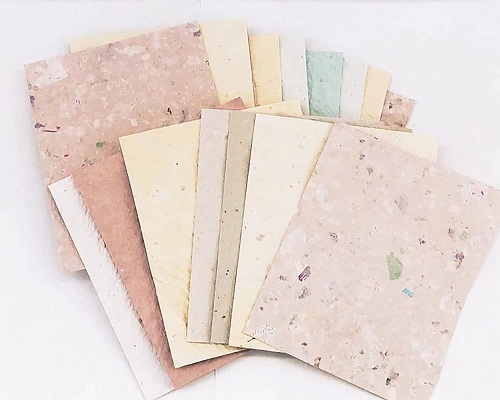
One of the most frequently used materials in the world is paper, and there are innumerable varieties to choose from. Every kind of paper has distinctive qualities that make it suited for particular uses. Paper can be used for an infinite number of things, from the most elementary usage like writing and sketching to more sophisticated uses like packing, engineering, and even art.
How Paper is made?
Wood pulp is used to make paper, and it is normally made either through a chemical or mechanical process that involves grinding wood logs with water. Following the completion of the raw pulping, the fiber is cleaned and injected onto a flat wire section, where it starts to spread out and develop into a broad sheet. The sheet is then put through a series of presses and dryers to remove any extra water before going through a calendaring process to make the paper smooth. Any desired coatings, colors, and binding agents are applied before being wrapped into reels or cut into standard sheets. Occasionally, the process of creating, using, shredding, and recycling paper will be repeated.
Here are some examples of several sorts of paper that show off this incredible product’s versatility:
Cardstock
This paper is thick and strong, making it perfect for making greeting cards, invitations, business cards, and other promotional items. It is available in a variety of hues, weights, and textures.
Printer Paper
The most typical kind of paper used for printing and copying is this one. It may be used for anything from printing off documents to making marketing materials and is offered in a variety of sizes and weights.
Tissue Paper
This paper is thin and fragile and is frequently used for crafting, decorating, and gift-wrapping. It is available in a range of hues and patterns and may be used to produce stunning, vivid artwork.
Vellum paper
This transparent paper is frequently used for printing or drawing designs that call for a softer, more subdued appearance.
Manilla paper
Manilla paper is a type of paper that was used to make file folders, envelopes, and manilla board. It is made from semi-bleached wood fibers. In reality, it’s more likely that the majority of the brown envelopes that go by the label “manilla envelopes” originate from less expensive recycled fibers. For more specialized uses, including in tea bags or as filter paper, true manilla paper is utilized.
Examination table paper
in order to create a germ-free surface barrier that helps shield patients from the spread of germs, examination table paper is frequently used at medical institutions and in doctor’s offices. When a previous patient leaves and a new one enters the examination room, the paper that is kept on a roller can be extended as needed to recover an exam table.
Acid-free paper
Using an alkaline manufacturing technique, acid-free paper is produced by stripping the lignin from the wood pulp and treating the pulp solution with a mild base, like calcium bicarbonate, to generate a pH that is higher than 7. When it’s critical to preserve documents for a long time without fading, yellowing, or deterioration, acid-free paper should be used.
Tracing Paper
This translucent paper works well for tracing pictures, patterns, and other designs. In-depth sketches and designs are frequently produced using it by artists and architects.
Wax Paper
This nonstick paper is used frequently in baking and frying. It can be used to wrap food, line baking sheets, or cover surfaces to stop them from sticking.
Rice Paper
This is a thin, delicate paper that is commonly used in Japanese calligraphy and artwork. It has a smooth, almost translucent texture and is perfect for creating intricate designs and images.
Swikriti Dandotia















